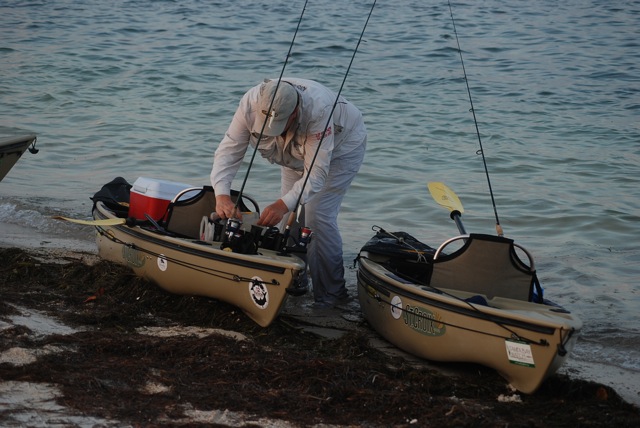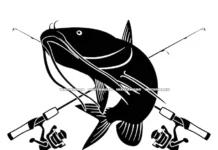Efficiency starts long before the angler is ever even near the launch. Efficiency continues at “setup” at the launch and pays off all day long. Efficiency is continued during “the hunt” for the fish. Read Neil Taylor’s tips to put “everything in its place” eliminate wasted time and catch more fish every time you get to get out there!
By Neil Taylor, “Strike Three Kayak Fishing”

By Neil Taylor, Strike Three Kayak Fishing
There are things that can be remiss on a typical fishing trip that can affect the day. Over the years, I have come up with tips and tricks to eliminate mistakes and get better organized in general in your fishing pursuits. With a focus on kayak fishing, there are also ideas that will benefit all anglers. The goal is for every person to grow their own “checklist” with some forethought and experience. The ideas below should help to shorten that learning curve, make the setup for your trip easier and your entire experience more “problem free”.
The very first set of ideas I like to call “The Night Before.” The efficient angler will do all the prep work at home. This includes restocking lures trays, replacing old leader line, oiling up reels, replacing old rusty hooks or sharpening jighead hooks, fixing line “tangles” (or replacing that line or spool), new batteries in the camera and flashlights and addressing other supplies you need to have that need attention after previous trips. The test drive: Give your reel handles a crank to make sure they are functioning properly. Perhaps this can be addressed by doing some maintenance on your own or you can switch that reel out with another one you have. Click flashlights on to make sure they work. For the kayak angler: put your paddle in your car. It is a very simple thing: You cannot operate your vessel without it but nearly everyone has been guilty of this mistake. Time spent performing these actions “the morning of” is time wasted. Do the prep work the day before you go.
For early morning launches, the number one item that gets left behind? Sunglasses. Often, not thought of until there is a glimmer of light in the east, anglers can take extra care to have them along if they are placed in their dry bag or crate the night before.
The Dry Bag
One of the most crucial items for any angler is the dry bag. The “fold and clip” sealing of the dry bag is something that should be done every time. Not taking care to properly close the dry bag just one time is not only an expensive mistake, it also can have you cut off from a method of rescue, should you need to make a phone call. Your camera, wallet, car keys and cell phone should always be safely secured in a dry bag. Options exist for individual dry bags for specific items. Aqua Pac is one company that makes exceptional options for VHF. A great option for your cell phone is the Yak Attack Aqua Box. Have a dry bag, use the dry bag.
The Crate
Another key item for the kayak angler to consider is the “crate.” A crate storage system can be the catchall organizer for gear storage. It simplifies setup and breakdown. Rather than grabbing a dozen or more items individually, the crate transfers them all. Items to consider for your crate: First aid kit, flashlight, extra batteries, flare gun, tackle, pliers, de-hooking tool, leader line, sunscreen and a fillet knife. As items are used or worn out, replace them immediately so you’re never caught shorthanded on these supplies. I use the Fishing Buddy by Native Watercraft.
Setup
Safety first: Load in the required safety equipment. Place your PFD into your kayak in a place where it can be reached. Setting up the kayak pre-launch: pull out your pliers, scissors and put them in the location where you can easily find them. The central cockpit area where you sit can be utilized best if you place materials you know you’re going to use during the trip. A shirt with pockets is also great for carrying other items. The best advice is for everything to always have its place. You should not waste time searching for items when you need them.
Tips: the vest and whistle can be combined and if the vest is on the boat the “signaling device” is also there, making your kayak “legal.” Your fishing license should be in your dry bag or a pocket in your PFD vest. Test out your flashlights before you launch and check to make sure you have spare batteries available. Attach your stakeout pole or anchor: Have your anchor rope untangled and ready to deploy. This could be the difference between catching a single fish or getting quickly and quietly anchored and having many shots at the whole school of fish.
Locking the car
It’s easy to get excited and take off for the prized fishing grounds but there is nothing worse than getting out there and wondering the whole time if you locked the doors or left a door or hatch open. Do a “walk around” and make sure you didn’t leave a door open and that it is all locked up.
Breakdown
At the end of the trip, haste makes waste. Many people I know have lost a lot of valuable equipment because they leaned it against their cars, put it on top of cars, placed rods up against trees, fence or laid other gear on the ground at the end of and outing. This can be avoided. And this applies to setup as much as it does to breakdown. One very simple rule addresses this. There are two locations for your equipment: “On the kayak” or ”inside the vehicle!” Driving off with $1000 in rods and reels leaning against a tree or a rail will definitely ruin your day.
Be methodical, be smart, come up with a great checklist that works for you and have better fishing trips with fewer problems.
Neil Taylor Kayak Fishing Specialist Strike Three Kayak Fishing www.strikethreekayakfishing.com Ph: 727-692-6345 Livelybaits@aol.com “Something violent is about to happen.”
- The Neil Blog… - July 26, 2023
- The Catfish - July 26, 2023
- update - July 22, 2023











